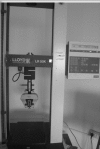Comparative evaluation of compressive strength and flexural strength of conventional core materials with nanohybrid composite resin core material an in vitro study
- PMID: 24431748
- PMCID: PMC3732736
- DOI: 10.1007/s13191-012-0236-4
Comparative evaluation of compressive strength and flexural strength of conventional core materials with nanohybrid composite resin core material an in vitro study
Abstract
Several dental materials have been used for core build-up procedures. Most of these materials were not specifically developed for this purpose, but as a consequence of their properties, have found application in core build-up procedures. Improvements in composites and the development of nanocomposites have led to their use as a core build up material due to their superior mechanical properties, optical properties and ease of handling. However it is not clear if they have better mechanical properties than the conventional core build up materials like amalgam, GIC and dual cure composite core build up material. The strength of the core material is very important and this study was undertaken to compare the mechanical properties of materials used for direct core foundations. The differences between the compressive strength and flexural strength of Filtek Z350 nanocomposite with conventional core build up materials like Amalgam, Vitremer GIC and Fluorocore were tested. Cylindrical plexi glass split molds of dimension 6 ± 1 mm [height] x4 ± 1 mm [diameter] were used to fabricate 15 samples of each core material for testing the compressive strength and rectangular plexi glass split molds of dimension 25 ± 1 mm [length] x 2 ± 1 mm[height] x2 ± 1 mm [width] used for fabricating samples for flexural strength. The samples were stored a water bath at 250 °C for 24 h before testing. The samples were tested using a Universal Instron testing machine. The results of the study showed that Fluorocore had the highest compressive strength and flexural strength followed by Filtek Z350 [nanocomposite] Amalgam had the least flexural strength and Vitremer GIC had the least compressive strength. Thus flurocore and nanocomposite are stronger than other core build up materials and hence should be preferred over other conventional core build up materials in extensively damaged teeth.
Keywords: Compressive strength; Core build up; Filtek Z350; Flexural strength; Nanocomposite; Vitremer.
Figures










References
-
- Yuzugully B, Ciftci Y, Saygili G, Canay S. Diametrical tensile and compressive strength of several core materials. J Prosthet Dent. 2008;17:102–107. - PubMed
-
- Levartovsky S, Kuyinu E, Georgescu M, Goldstein GR. A comparison of the diametral tensile strength, the flexural strength, and the compressive strength of two new core materials to a silver alloy-reinforced glass ionomer material. J Prosthet Dent. 1994;72:481–485. doi: 10.1016/0022-3913(94)90118-X. - DOI - PubMed
-
- Bonilla ED, Mardirossian G, Caputo AA. Fracture toughness of various core build-up materials. J Prosthet Dent. 2000;9:14–18. - PubMed
LinkOut - more resources
Full Text Sources
Other Literature Sources
